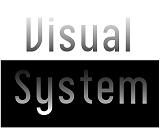A settlement agreement is a legally binding document that outlines the terms agreed upon by two parties to resolve a dispute. It is often used to resolve disputes outside of court and can be a simple and cost-effective way to bring a disagreement to a close.
If you are considering a settlement agreement, it is important to understand the basic elements that should be included in the document. Here are some key components to consider when drafting a simple settlement agreement between two parties.
Clear Identification of Parties Involved
Start the agreement by clearly identifying the parties involved in the dispute. This should include the name, address, and other identifying information for each party. It is important to ensure that the parties are correctly identified to avoid any confusion or ambiguity.
Statement of Purpose
Next, clearly state the purpose of the settlement agreement. This should explain the dispute that is being resolved, and the terms agreed upon by both parties to bring the disagreement to a close. The purpose section should also provide a brief summary of the terms of the agreement.
Scope of the Agreement
The scope of the agreement should define the specific terms of the settlement. This may include financial compensation, the transfer of property, or any other actions that are agreed upon by both parties. The scope should be clearly defined and leave no room for confusion.
Mutual Release of Claims
One of the most critical aspects of a settlement agreement is the mutual release of claims. This section outlines the agreement between the parties to release any further claims against one another. This means that neither party can sue the other for any additional legal action related to the dispute.
Confidentiality
Some settlement agreements may include a confidentiality clause. This section outlines the agreement between the parties to keep the terms of the settlement confidential. This ensures that the details of the dispute are not made public and can protect the reputation and privacy of both parties.
Signatures
The final step in drafting a simple settlement agreement between two parties is to obtain signatures. Both parties should sign the document to indicate their agreement to the terms outlined in the agreement. This final step ensures that the settlement is legally binding and enforceable.
In conclusion, a simple settlement agreement can be a cost-effective and straightforward way to resolve disputes between two parties. If you are considering this type of agreement, it is essential to include clear identification of the parties, a statement of purpose, scope of the agreement, mutual release of claims, and signatures. By including these key components, you can ensure that your settlement agreement is clear, concise, and legally binding.
